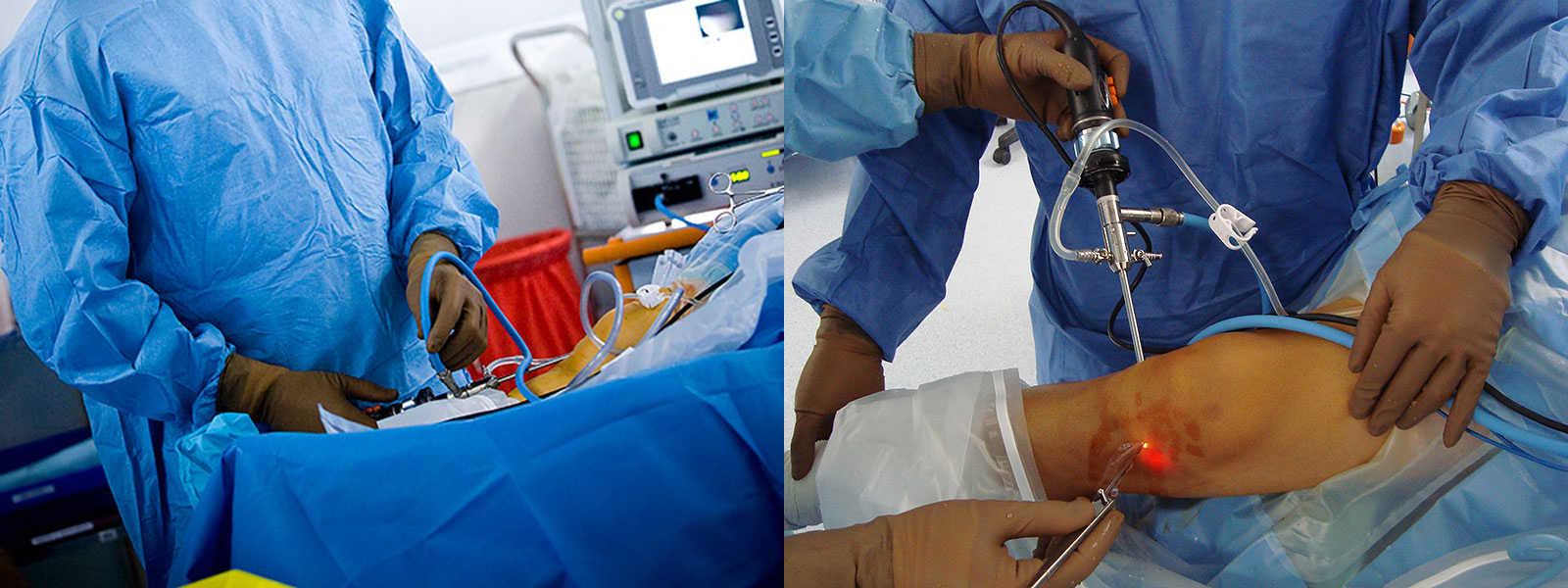
Knee Arthroscopy
Knee Arthroscopy is a procedure in which the doctor examines your knee with an instrument called an arthroscope. An arthroscope is a tube with a light on the end that is inserted in your knee and projects an image of the inside of your knee onto a TV monitor. The arthroscope is about the diameter of a pencil.
Arthroscopy is a technique that allows for a wide range of surgery to be performed within the knee through two or three very small cuts. In general, it leads to a much more rapid recovery than older techniques using larger incisions. Nonetheless, arthroscopy is a surgical procedure and should be taken seriously. These notes are aimed to help answer some of the questions you may have.
The surgery involves making two short incisions on either side of the kneecap (patella). A telescopic camera is put into the knee through one incision and instruments can be introduced into the knee through the other, allowing surgery to be performed. Sometimes additional incisions are made, depending on the operation being performed. The incisions are usually closed using Steristrips which are small pieces of tape. Sometimes an additional dissolving stitch is also used. Depending on the type surgery that has been performed, a small drain tube may be placed in the knee to stop any unwanted bleeding accumulating within the joint. This drain tube is removed before you go home.
Our Services
- Anesthesiology
- Critical Care Medicine
- Emergency Medicine
- Endocrinology
- ENT
- General Surgery
- Infectious Diseases
The Procedure
Many different operations can be performed arthroscopically. Meniscectomy involves removing a torn piece of a meniscus (commonly referred to as a cartilage). Meniscal repair is sometimes performed when the type of tear makes it possible for the meniscus to heal. There are various methods of repair, some of which involve putting small implants into the meniscus. Meniscal tears can also be sutured, in which case there is an extra incision towards the back of the knee. Chondroplasty involves treating the articular cartilage capping on the end of the bone. The articular cartilage can be damaged through injury or as part of osteoarthritis which is essentially a wear process. Osteochondritis dissecans is a condition affecting a localised area of articular cartilage and the underlying bone which may also be treated by chondroplasty.
COMPLICATIONS
Arthroscopy is generally a very safe procedure. Complications are not common. Possible serious problems include infection and calf vein thrombosis.
Infection of the wounds can occur, despite the precautions taken. This is usually easily treated with antibiotics. However, sometimes the infection can get into the joint and this requires admission to hospital, additional arthroscopic surgery and intravenous antibiotics. Infection of the joint (septic arthritis) is a serious condition, which can have long-term consequences of stiffness and osteoarthritis.

